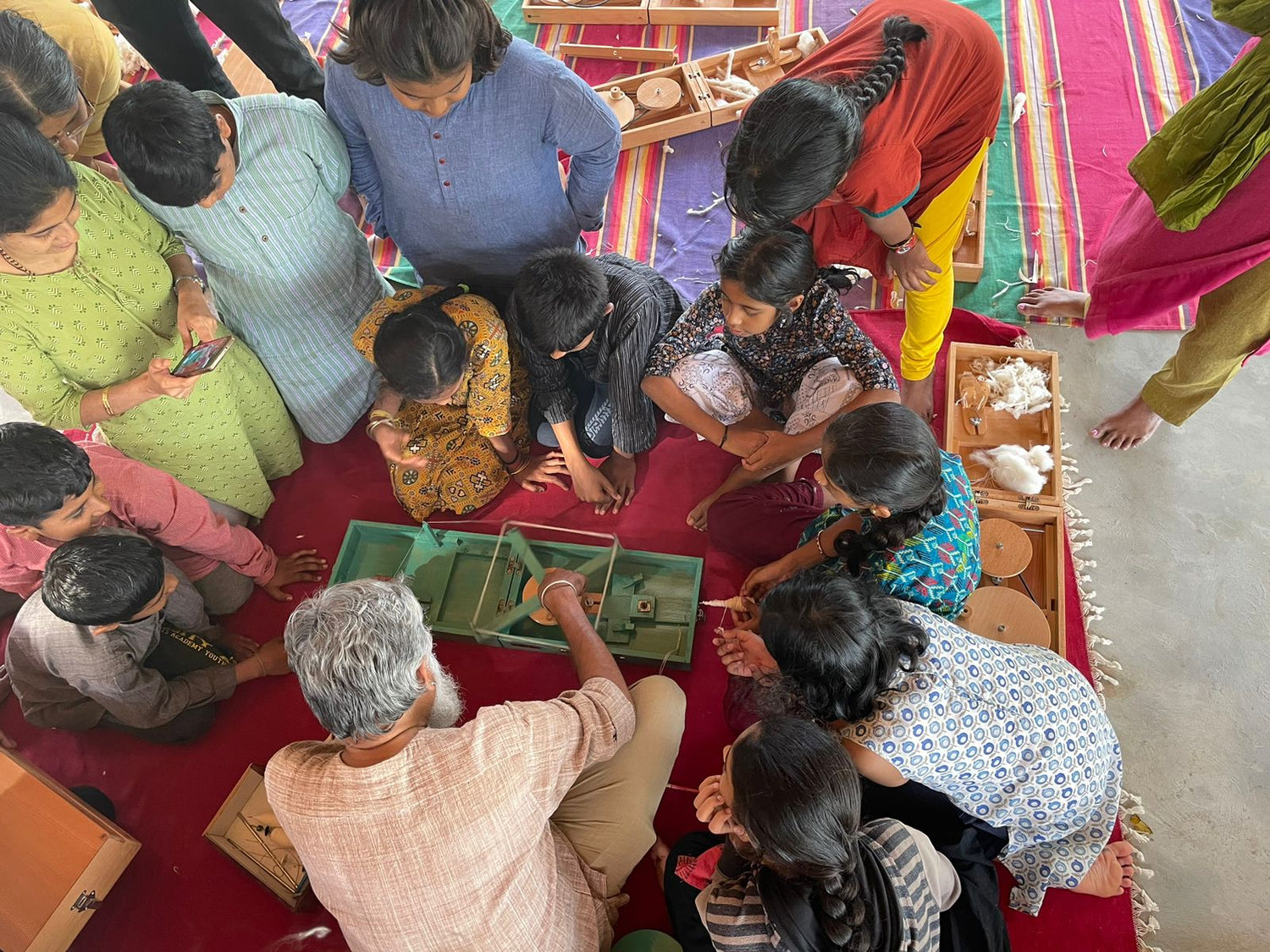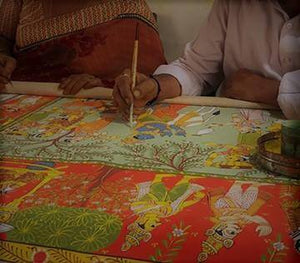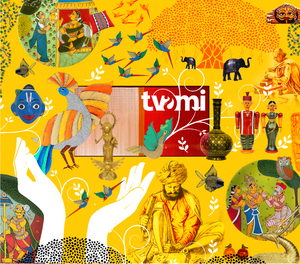“Pachhikari runs in our blood,” asserts Imran Qureshi, “our forefathers came from Persia to help Emperor Shah Jahan build the nayab Taj Mahal, here in Agra.”
The intricate floral, geometric and calligraphic patterns adorning the white marble walls and arches of the monument are indeed among the most exquisite renditions of inlay work to be found anywhere across the world. Many of the Persian artisans who helped execute it, settled in the city and more so in Taj Ganj, a locality adjacent to the Taj. Centuries later, the art form continues to thrive in the area’s bustling streets with the artisans’ descendants taking forward the traditional craft.
Imran Qureshi is one distinguished craftsman among them who is engaged in crafting beautiful marble inlay products. Born in 1989 in Agra, the Bachelor of Commerce graduate comes from a family of seasoned parchin kari artisans spread across multiple generations. His father though is a master craftsman who makes carpets and has been bestowed with a state award for his work. Imran learnt the intricacies of marble inlay from his uncle and has been felicitated with two state awards recognising his skill and craft. Excellence and creativity run in the family, it seems.
Marble inlay has made its way from the walls of iconic monuments onto big and small home décor items, storage chests and boxes, table top curios, figurines and more. Move through the narrow lanes of Taj Ganj and you will find numerous workshops engaged in the craft. It is the fine attention to detail paid while carving intricate patterns on the marble surface using chisels and hand tools and embedding them with finely shaped gemstones that make an artisan’s work stand out and Imran strives to do just that.
“We draw inspiration from the Taj not just for design but also for the finesse of the craft and using top-quality materials”, shares Imran. He believes sustaining the craft’s prestige is their responsibility and something they owe to their ancestors. Thus, maintaining highest possible standards has always been non-negotiable. “We source authentic gemstones from the best vendors,” says Imran, “the blue lapis comes from Afghanistan, orange carnelian from Yemen, green malachite from Tanzania, paua shell from New Zealand, mother of pearl shell comes from Kolkata, jasper from Jaisalmer and turquoise stone from Tibet or Turkey.” The surface of choice for crafting inlay products largely remains the iconic white Makrana marble that comes from Rajasthan. It is the same ivory white marble used in the Taj Mahal.
Imran and his brother who work together, have mastered their skills over the years. They offer an expansive range of products, many of which have been designed to meet contemporary taste, preferences and utility requirements. It is evident that each item is created with the equal nuance, dedication and emotion. Imran highlights, “Our products travel far and wide across the world. People who shop our products, seek to take home or gift to their loved ones, a small part of a rich heritage immortalised by the Taj. We understand the depth of that sentiment and always bear it in mind while we create our pieces.”
Charakha Workshop

Charakha Workshop
Is learning to spin your own yarn an art or a skil! While we dont know the answer to that, learning to spin yarn is definitely theraupatic. It also supports weavers who weave our fabric.
In a world consumed by consumerism, how lovely it would be if we all know where our fabric comes from! If you would like to spin yarn from cotton, wear fabric woven from your yarn, then the Charakha workshop is just the thing.
Support the weavers and spin your own yarn!
Join us for the Charakha workshop!
Workshop Schedule:
14th and 15th Sept 2024
For more details WA us at 6364665722


